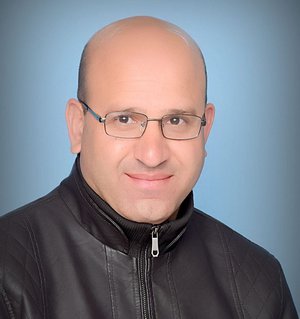Loay Abu Alsaud
- Nature of Work
- Academic
- Profession
- مدير دائرة العلوم الاجتماعية
- Email Address
- [email protected]
- Office Phone
- (+970) 9 2345113 Ext. 4546


Loay Abu Alsaud
- Nature of Work
- Academic
- Profession
- مدير دائرة العلوم الاجتماعية
- Email Address
- [email protected]
- Office Phone
- (+970) 9 2345113 Ext. 4546
- Course Title
- Introduction to Archaeology
- Course Number
- 10316212
- Instructor Name
- Loay Abu Alsaud
- Contact Information
- [email protected]
- Semester(s) and academic year(s)
- First Semester 2013
- Compulsory / Elective
- Compulsory
The course provides a general introduction to archaeology as a scientific and professional discipline and practice in today's society. The course looks at the history and devlopment of archaeology as well as selected aspects of archaeology in it's current form. Course activities include lectures, seminars as well as visits to Museum exhibitions and excursions to selected sites in Palestine. A short material course offers students the chance for hands-on study of archaeological artefacts. The topics covered by this course include: theoretical perspectives, fundamental methodologies, archaeological sources, analysis and interpretation of material culture and central aspects of the relationship between archaeology and today's society. The course presents a broad outline of the culture history of Near Eastern (Bilad Al-Sham) in general and Palestine in particular. In addition, through lectures students learn about the landscape and environmental history of the region. Common archaeological dating techniques are also reviewed. The course includes a module that gives an introduction and overview of Palestinian cultural heritage management, by looking at current legislation, practices and priorities and how they are applied to archaeological sites in particular.
A candidate who has passed the course, will have achieved the following learning objectives
Knowledge objectives. Students will be able to:
- describe and discuss different definitions of archaeology as a scientific discipline and practice in the today's society.
- define and discuss the relationship between theories of knowledge and archaeological analyses and interpretations.
- define and discuss central phases of archaeology's research history.
- define and discuss various thematic perspectives on archaeology as a discipline and practice.
- describe and critically assess the use of various methods of analysis and dating in archaeology today.
- identify the main developments in climate, landscape, flora and fauna in Near Eastern since the last Ice Age.
- describe from an archaeological perspective the main temporal and cultural-historical developments in Near Eastern and particularly central Palestine from the last Ice Age until historical times.
- Identify and describe common artefacts and raw materials from the various archaeological periods.
- Identify and describe the most common structures, sites and site-types from the various archaeological periods in the region. -provide basic descriptions and assessments of common objects and structures from the perspective of conservation.
- Describe Palestinian cultural heritage's current organisation and legislation from the perspective of archaeological heritage.
- Describe and discuss the rationale behind various practices and priorities in Palestine heritage management today.
Skill objectives. Students will be able to:
- Understand and apply precisely fundamental archaeological terminology.
- Plan and complete independently written assignments of c. 4000 words.
- Find and critically assess relevant academic literature on archaeological topics and themes.
- Express and discuss basic archaeological facts and concepts with teachers and fellow-students, both orally and in writing.
- Partake in individual and group discussions of experiences and impressions from different field excursions and visits.
- repeat practical experiments with selected basic registration techniques.
A reading list is made available each semester. Digital compendia of portions of the course litterature are available for enrolled students.
| Activity | Percent (%) |
|---|---|
| Midterm Exam | 25% |
| Activities | 25% |
| Final Exam | 50% |